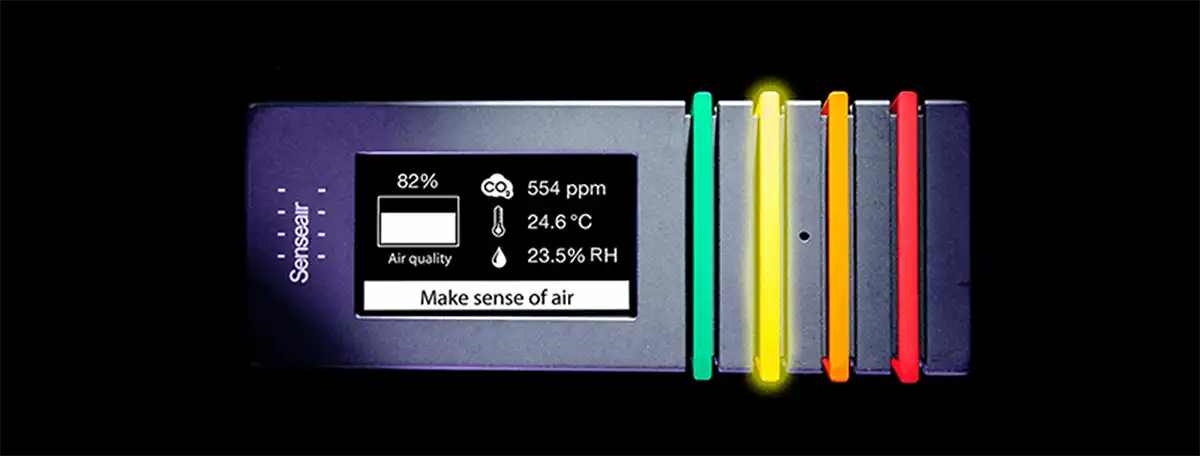Senseair
Air and gas sensors
Senseair is a leading global provider of air and gas sensing technology. Their purpose is to make sense of air by providing the best possible measurement solutions, service and intelligence.
Indoor air quality - monitor and control with CO2 sensors
By measuring the CO2 level, you can regulate the air flow according to need. With demand controlled ventilation you can improve health, prevent the spread of virus and reduce energy costs with up to 50%. By using a self-calibrating sensor, you can mount and forget your sensor for the next 15 years and it will still be accurate.


Productive and healthy indoor air quality
The more people in a building, the more CO2. By measuring the CO2 level, you can regulate the airflow according to need. This will save energy and create a healthy indoor environment.
Key benefits of good indoor air quality:
- Increased productivity level
- Better decision making performance
- Long-term health benefits
Building Management Systems
The primary indoor source of CO2 in office buildings is the breathing of the building’s occupants. CO₂ concentration in office buildings typically ranges from 400 to 2,500 ppm. With CO2 measuring, it is possible to control individual fans, dampers, valves etc., which create a better indoor environment and energy savings. A common application is controlling ventilation in rooms with varying numbers of people, such as offices, classrooms, and cinemas.
Indoor air quality also improves due to a reduction in the number of viruses and bacteria. Ventilating a room also reduces the number of particles occurring indoors.

Saving energy with demand controlled ventilation
In a commercial building, the number of people visiting can vary greatly. If you need to heat or cool the building, you can save a large amount of energy by changing the airflow according to demand.
Key benefits:
- Energy savings
- Positive environmental impact
- Healthy indoor air quality
The CO2 concentration in a room varies depending on the number of people in it. An empty room generally has a concentration of about 400 ppm (normal outdoor concentration). The CO2 concentration in the room will then increase for each person added.
Therefore, a small Demand Controlled Ventilation system can be a good idea. This system has a sensor that measures the CO2 value and sends a signal to a ventilator or a VAV-device that then changes the level of ventilation required in the room. The system also has variable dampers that are usually used to regulate the airflow through the sensor.
A minor ventilation system is an intelligent sensor or analyser that is adjusting one fan in the same room. This fan regulates the airflow.
Reduced costs
This application saves a lot of money in the form of energy savings. Room fans will only operate for as long as they need to, based on the level of CO2 in the environment. This reduced use of energy is also good for the environment and is an obvious way to conserve the earth's resources.
Reduced costs
This application saves a lot of money in the form of energy savings. Room fans will only operate for as long as they need to, based on the level of CO2 in the environment. This reduced use of energy is also good for the environment and is an obvious way to conserve the earth's resources.
Tests on buildings that are using Demand Controlled Ventilation show that energy costs are reduced by about 30%. This can lead to a return on investment in about 1 year.
